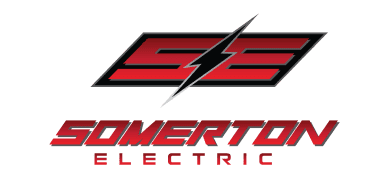Table of Contents
London, Ontario, is becoming a beacon for sustainable energy, with an increasing number of households and businesses opting for solar panel installations. This transition not only supports the environment but also offers substantial economic benefits to the community.
Why Choose Solar Energy?
Choosing solar energy is becoming increasingly popular in London, Ontario, not just for its aesthetic appeal but for the substantial benefits it brings. Here’s why you should consider going solar:
Financial Savings:
- Cut Down Your Electric Bill: Imagine reducing your monthly electric bill significantly or even eliminating it. Solar energy can turn this into a reality by harnessing the free power of the sun.
- Increase Home Value: Homes equipped with solar panels have been shown to sell at higher prices. Investing in solar technology can pay off in the long run, making it a smart financial decision.
Environmental Impact:
- Reduce Your Carbon Footprint: Switching to solar helps decrease reliance on fossil fuels, reducing your household’s greenhouse gas emissions and contributing to global efforts against climate change.
- Sustainable Energy Source: Solar power provides a clean, renewable source of energy that helps protect the environment for future generations.
Installation and Maintenance:
- Smooth Installation Process: Local electricians in London, Ontario, are skilled in solar panel installation, ensuring a hassle-free setup process.
- Low Maintenance: Once installed, solar panels require minimal maintenance, which is another reason homeowners prefer them.
The Basics of Solar Panels
Understanding solar panels is easier than you might think. Let’s break down the essentials of how these sunny sidekicks work to power your home and why they’re becoming a fixture in neighborhoods across London, Ontario.
What Are Solar Panels?
- Simplicity in Design: Imagine a sleek, shiny sheet that sits on your roof, soaking up the sun’s rays. That’s your solar panel. It’s not just modern art; it’s a powerhouse in disguise.
- Silent Energy Producers: Solar panels work without a whisper. It’s serene, really, just panels and the sun having a quiet conversation.
How Do They Work?
- Sunlight to Power: In the simplest terms, solar panels convert sunlight into electricity. When the sun shines on your roof, those panels get to work, turning that light into the power that runs your coffee maker, keeps your fridge cold, and charges your smartphone.
- Feel the Heat: Although you can’t really feel anything from the panels themselves (please don’t touch them on a sunny day—they can get hot!), the energy they produce is all around you in the form of light, warmth, and all your devices humming cheerfully along.
Types of Solar Panels:
- Monocrystalline Panels: Picture a dark, sleek surface, like a lake at midnight. That’s monocrystalline—a high-efficiency player in the solar game.
- Polycrystalline Panels: A bit lighter, a little less sleek but equally important. These are the workhorses of the solar panel world, a bit like the reliable family car.
- Thin-Film Panels: These are the newcomers, thin as a wafer and flexible. They can wrap around surfaces, perfect for unusual roofs.
Why It Matters to You:
- Save Money, Live Better: Each ray of sunlight that hits your panels is a penny saved on your energy bill. Over time, those pennies add up to real money.
- Join the Green Revolution: By choosing solar, you’re not just cutting costs; you’re also cutting down on pollution and making a choice for a cleaner planet.
Assessing Your Home’s Solar Potential
Thinking about jumping onto the solar bandwagon? It’s not just about slapping some panels up there on your roof and hoping for the best. Let’s walk through how you can tell if your home is a good candidate for catching those golden rays.
Location, Location, Location:
- The Sunny Side Up: First things first, does your roof even get good sunlight? It might seem obvious, but it’s all about location. If your home is nestled under a canopy of leafy trees or overshadowed by taller buildings, your roof might be more in the shade than the sun.
- Direction Matters: In London, Ontario, having a roof that faces south is like winning the solar lottery. It gets the most sun throughout the day. East or west can work too, but north-facing roofs? They’re the underdogs here.
The Right Angle:
- Pitch Perfect: The angle of your roof affects how much sun hits it. Ideally, you want a pitch that’s not too steep or too flat. Think of it as trying to catch rain in a bucket—angle it just right to catch the maximum amount.
Obstacles and Oddities:
- Chimneys and Skylights: These can be quirky features of your home but think of them as the playful pets of your roof—always finding ways to cast shadows where you least expect them.
- Vent Pipes and Antennas: Sometimes, these are necessary, but they can scatter shadows, too. It’s a bit like playing tag with the sun, and these features are “it.”

Making the Most of It:
- Energy Audit: Before you even think about panels, having an energy audit can be eye-opening. It’s like a check-up for your home. How much energy are you using? Where can you save? This audit lays it all out.
- Consult the Pros: Chat with a local solar expert. They can peek at your roof with sophisticated tools (and some plain old experience) to measure how much sun your roof sees over the seasons. It’s a bit like having a weatherman specifically for your roof.
Choosing the Right Contractor for Solar Installation
Selecting the right contractor for your solar panel installation in London Ontario isn’t just about picking a name out of a hat. It’s about finding a reliable partner who will help you make the most of your investment. Here’s how you can ensure you pick the best for the job.
Check Their Credentials:
- Licensed and Insured: Ensure your contractor is licensed and carries the proper insurance. This isn’t just paperwork; it’s your peace of mind. It means they’re professionals who meet the standards and will handle your property with care.
- Certifications Matter: Look for certifications like ECRA/ESA licence. It’s not just alphabet soup; it shows they’ve got the chops for the job.
Experience Speaks Volumes:
- Years in Business: How long have they been installing solar panels? Experience often translates to a smoother installation and fewer hiccups along the way.
- Local Know-how: A contractor familiar with London, Ontario’s climate, and regulations will navigate the project with ease. They’re like a local guide in the world of solar, showing you the best paths and avoiding the potholes.
Reputation Is Key:
- Customer Reviews: Dig into what others are saying. Online reviews and testimonials can tell you a lot about their reliability and quality of work. It’s like getting a recommendation from a friend.
- Ask for References: Don’t be shy to ask for references. Talking to past clients is like peeking into the future of your own project.
Communication Styles:
- Clear Communicator: Find someone who speaks your language, literally and figuratively. They should explain everything clearly, from the cost breakdown to the timeline, without bombarding you with jargon.
- Responsive: Are they quick to respond to your calls or emails? A contractor who’s prompt in communication respects your time and shows professionalism.
Get Detailed Quotes:
- Transparent Pricing: Ask for detailed quotes that outline every aspect of the job. No one likes surprise charges, so clarity here is as refreshing as a breeze on a hot summer day.
- Compare and Contrast: Don’t settle on the first contractor you meet. Get a few quotes to compare. It’s like trying different ice cream flavors before deciding which one is your favorite.
The Installation Process of Solar Panels
Embarking on the installation of solar panels can feel a bit like setting up a domino show. You want everything to fall into place perfectly, from start to finish. Let’s walk through the typical installation process, making it as straightforward and relatable as possible.
Initial Consultation:
- Home Visit: Imagine a solar expert dropping by your place. They’re not just there to have a cup of coffee; they’ll thoroughly inspect your roof, check out the electrical status of your home, and gauge the best position for those panels. It’s a bit like having a tailor measure you for a suit – everything needs to fit just right.
- System Design: Based on this visit, they’ll craft a solar panel system tailored just for your home. Think of it as a custom-made outfit, but instead of fabric, it’s made of panels and wires.
Getting the Green Light:
- Permits and Paperwork: Now, this part can be as dull as watching paint dry, but it’s crucial. Your installer will handle the local permits to ensure everything is up to code. It’s all about crossing the ‘t’s and dotting the ‘i’s.
Installation Day:
- Setting Up: Early morning, you’ll hear the footsteps of the crew on your roof. The sound of tools and the occasional drill might disrupt your usual morning quiet, but it’s all part of the process.
- The Install: They’ll start by setting up mounts to secure the panels. It’s like laying down the bones of a building. Then, the panels themselves are attached, all shiny and new, catching the light even before they’re fully hooked up.
- Wiring: Wires are run from the panels to your home’s power system. It’s not unlike setting up a new home theater system, except these wires carry sunlight-turned-electricity.
Final Steps:
- Connection to the Grid: Your installer will connect your new system to the local power grid. This is when your solar panels shake hands with the city’s electricity network.
- Inspection and Approval: An inspector might pop by to take a look. They’re checking to make sure everything’s installed correctly and safely. Passing this inspection is the final nod you need to start generating your own power.
Firing It Up:
- System Activation: This is the moment of truth. The system is switched on, and voilà – you’re generating your own clean, green energy. You might not hear a drumroll, but it’s a big moment, marking your step towards sustainability and energy independence.
Post-Installation:
- Monitoring and Maintenance: Most solar companies provide monitoring tools that let you see exactly how much power you’re generating and using. It’s a bit like having a fitness tracker, but for your house.
- Customer Support: Any questions? Need help? Good solar installers don’t vanish after the installation. They stick around to ensure you’re happy with your system.
FAQ’s
The cost typically ranges between $15,000 and $30,000, depending on the size of the system and the specifics of your home.
Installation usually takes 1 to 3 days, once all permits are secured and the equipment is on hand.
Solar panels require minimal maintenance. Regular cleaning to remove dust and debris, and an annual inspection are generally sufficient.
It’s highly recommended to use a professional installer to ensure safety and compliance with local regulations, as well as to secure necessary permits.
Check for any obstructions like tree branches over the panels. If there are none, contact a professional to inspect your system for any technical issues.




